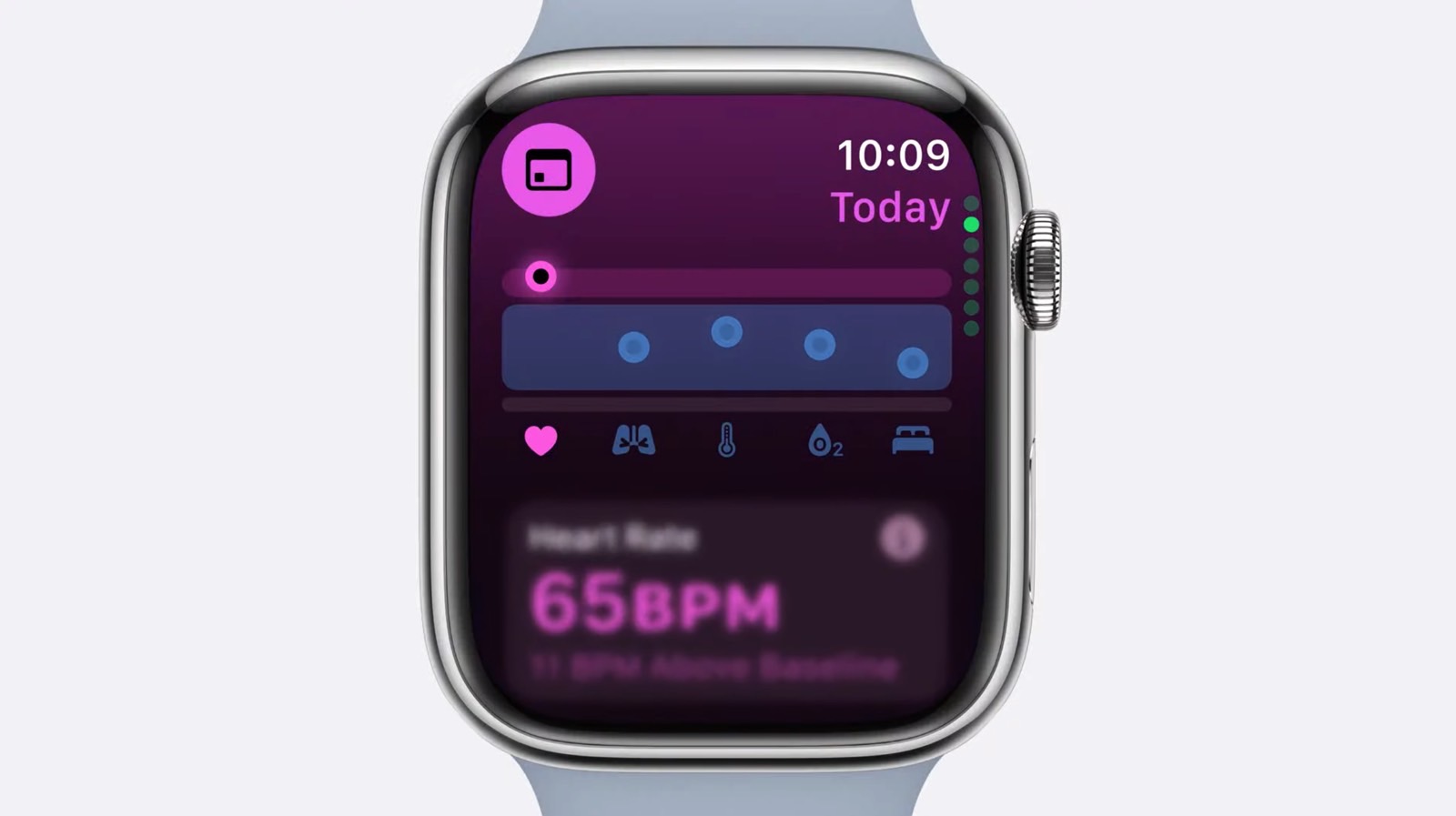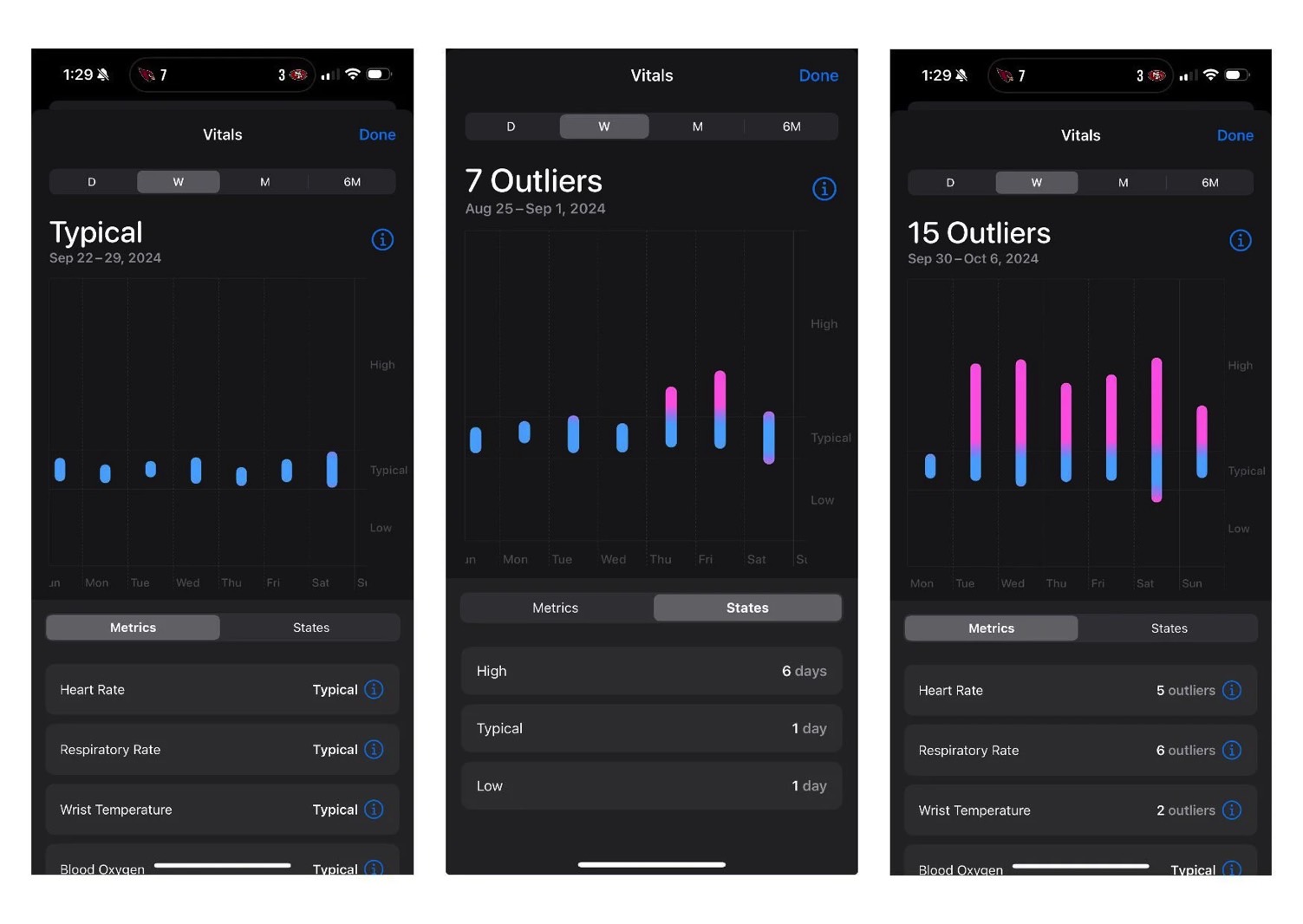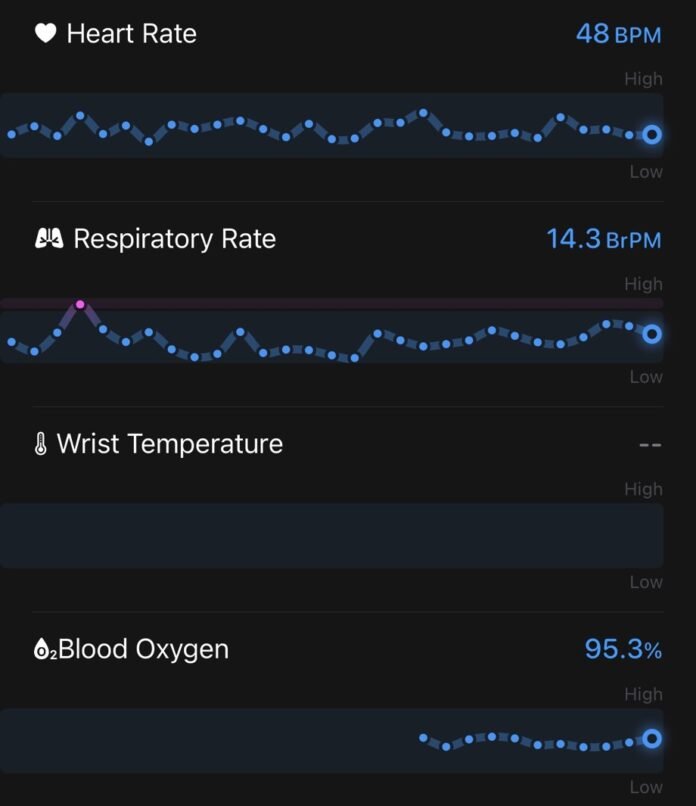I’m a big fan of wearables like the Apple Watch because I rely on these devices to track my health and fitness 24 hours a day. That includes sleep tracking, as I wear the Apple Watch at night so it can track my parameters while the body is resting and recovering. Being a long-time iPhone user, I’ve used the Apple Watch on the side, but the same thinking would apply to any other ecosystem.
That said, the Apple Watch has a brand new app that I’ve been using since I installed the beta versions of iOS 18 and watchOS 11 earlier this year to track the trends of my health parameters.
It turns out the app can also predict illnesses several days before they occur, at least according to several Apple Watch users. However, I wasn’t able to take advantage of this feature until I upgraded to the Apple Watch Series 10 from the Apple Watch SE 2.
It’s the brand new Vitals app that continuously tracks up to five parameters, giving you a bird’s eye view of your overall well-being. If these user accounts are correct, the app can warn you a few days before you get sick. And it may be a good idea to configure it right away in advance of the upcoming flu and COVID seasons.
The Vitals app
The Vitals app is part of the watchOS 11 release. The same information is stored in the Health and Fitness apps on your iPhone. Apple said at WWDC 2024 that it developed the historic Vitals algorithm using real-world data from the Apple Heart and Movement Study.
The Vitals app contains measurements for the following parameters: heart rate, respiratory rate, pulse temperature, blood oxygen and sleep duration. The app shows your baseline for each parameter and highlights outliers when values are recorded above or below your averages.
The watch automatically monitors heart rate and blood oxygen levels. You will need to configure sleep tracking and enable a Sleep Focus mode for collecting wrist temperature at night.
If the feature is available in your region, the watch will also automatically perform blood oxygen measurements. Apple Watch Series 10 in the US does not have access to the feature due to an ongoing patent dispute between Apple and Masimo.
As a runner training for marathons, I used Vitals on my Apple Watch SE 2 to track just three of these parameters: heart rate, breathing rate, and sleep duration (as seen above). I found Vitals useful in giving me an idea of my well-being for the day and informing me if I needed to make any changes to my training.
Maybe I didn’t get enough sleep last night, so a glance at the Vitals app would be enough to tell me to take it easy today.

But I wanted even more health data. That’s one of the reasons I upgraded to the Apple Watch Series 10 last month. The premium wearable comes with wrist temperature and blood oxygen tracking.
My Vitals app is now almost complete. It still needs to get the baseline wrist temperature as I didn’t use Sleep Focus mode at night. That’s the only way the Apple Watch Vitals app can take wrist temperature readings.
Apple Watch predicts illness?
A few days ago I mentioned wanting to track temperature changes, thinking the Watch might pick up on small changes that could predict an impending cold, flu, or COVID infection. Research has found that changes in Apple Watch heart rate can predict a COVID case. But what if small temperature changes could also help with that?
It turns out that some Reddit users have discovered that the Apple Watch’s Vitals alerts preceded the onset of symptoms.
One person posted a screenshot showing high wrist temperature readings that preceded becoming ill:
Woke up today with a feeling of peace. Now that the evening is coming, I feel that old familiar feeling in my head. I’m sick
Another person said they started using Vitals since it came out of beta, and they also discovered that the Watch could predict they would get sick:
I started taking Vitals when it first came out in beta and I’ve gotten sick about twice since then. Both times I knew a few days in advance and I didn’t feel anything wrong
Someone else posted multiple screenshots from the iPhone’s Vitals section in the Fitness app to show their typical vital signs, the outliers during a case of COVID in August, and the outliers during a recent illness:
I just got the worst illness of my adult life and my Apple Watch captured the whole experience perfectly.
The first image is a typical week, the second image was when I was battling COVID at the end of August (and that was gross too), and the last image was my past week. I am very impressed with the Vitals app’s ability to identify diseases and recognize that something is wrong.
Here are those screenshots:

With all this in mind, I will certainly pay more attention to the Vitals app in the coming months. I usually do it from the Fitness app, which I visit regularly to track my most recent runs.
Getting sick is an unpleasant thought for someone preparing for a marathon race, but it can happen. It happened a few months before my first marathon race.
If the Vitals app can detect early signs, I can slow down and rest before symptoms occur. Then I return to regular training once the five Vitals parameters return to nominal values.
Even if you don’t look at the Vitals app that often, you’ll receive notifications when multiple parameters are out of range. For that to happen, make sure you keep track of as many as possible.
I’ll add the obvious disclaimer. The Apple Watch is not yet used as a disease predictor. The technology isn’t there. Apple never made any such claims during the Apple Watch health segment at WWDC. Instead, Apple wants you to pay attention to the Vitals app so you know when some of your most important health parameters are out of reach. There may be cases where you need to visit a doctor for further advice.





